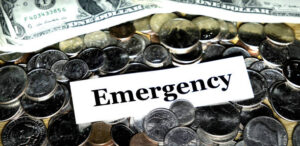In today’s uncertain world, having an emergency savings fund is more important than ever. According to a Bankrate survey, nearly 25% of Americans don’t have any emergency savings at all, and 29% of those who do have less than three months’ worth of living expenses saved. This leads us to wonder: How can we creatively and effectively build our emergency funds without feeling financially strained? In this article, we will explore ten unique strategies that can help you jumpstart—or boost—your emergency savings.
Why Emergency Savings Matter
Emergency savings serve as a financial safety net, helping to cover unexpected expenses like medical bills, car repairs, or sudden job loss without going into debt. A study from the Federal Reserve found that 40% of Americans would struggle to come up with $400 in an emergency. Establishing a safety net is crucial and can be accomplished in creative ways. Now let’s dive into ten remarkable strategies!

1. Set Up a Savings Challenge
– Choose a savings challenge that suits your lifestyle.
– Common options include the 52-week challenge or rounding up your purchases to save the difference.
Why It Works:
Starting with a small, manageable goal makes saving feel less intimidating. According to financial expert and author Jean Chatzky, these challenges not only instill discipline but also create a sense of accomplishment. “The act of saving can motivate people to change their financial habits,” she says.
Statistics:
A recent study from the Consumer Financial Protection Bureau showed that people who set aside a specific amount and track their progress are 80% more likely to meet their savings goals.
2. Automate Your Emergency Savings
– Set up automatic transfers from your checking account to your savings account.
– Determine a specific amount to transfer each week or month.
Why It Works:
Automating savings takes the human element out of the process—no more forgetting to save! This method ensures you treat savings like a recurring bill. As noted by finance expert Tiffany Aliche, “If you let your paycheck hit your bank account, you’ll likely spend that money. Save first, spend later!”
Tip:
Set a realistic amount for transfers. Even if it’s just $20 a month, every bit adds up over time.
3. Cash in Your Rewards Points
– Use credit card rewards points or loyalty program points to redeem cash back.
Why It Works:
Did you know that millions of dollars in credit card points go unused each year? The rewards you’ve already earned can quickly boost your emergency savings fund. According to a report by NerdWallet, the average American earns about $250 in rewards every year.
Action Step:
Look into how many points you have and consider redeeming them toward cash back or as a credit to your account.
4. Sell Unused Items
– Declutter your home and sell items you no longer use.
Why It Works:
A survey by the National Association of Professional Organizers found that 54% of Americans have more items in their homes than they use. Selling items on platforms like eBay or Facebook Marketplace can earn you quick cash.
Pro Tip:
Use the “one in, one out” rule to prevent clutter from accumulating again. For every new item you purchase, sell one old item.
5. Take Up a Side Gig
– Start a freelance job or a side business based on your skills.
Why It Works:
According to a 2022 study by Upwork, around 36% of Americans have a side hustle. Not only does this increase your income, but it can also add flexibility to your lifestyle.
Ideas for Side Gigs:
– Tutoring
– Pet-sitting
– Freelance graphic design
– Selling handmade crafts on Etsy
6. Use Tax Refunds Wisely
– Direct your tax refund into your emergency savings account instead of spending it.
Why It Works:
In 2023, the IRS reported that the average tax refund was approximately $3,000. By funneling that money directly into your savings, you can build a significant cushion for future emergencies.
“Seeing your savings increase all at once can be motivating,” says financial planner Michael L. Smith. “Use tax refunds to give your savings a substantial boost!”
7. Participate in Local Community Events
– Attend community events where you can win prizes or cash.
Why It Works:
Many local charities and organizations hold fundraising events where attendees can win money or gifts. This can be a fun way to engage with your community and support local causes, all while potentially multiplying your savings.
Action Step:
Check local newspapers or community boards to find out about upcoming events.
8. Take Advantage of Employer Programs
– Participate in workplace savings programs or employer-sponsored retirement plans.
Why It Works:
Employers may offer matches on contributions to retirement accounts, which can indirectly help bolster your savings. Diversifying your savings strategy by utilizing employer resources can yield financial benefits.
Expert Insight:
“In many cases, employees don’t fully take advantage of the benefits provided by their employers,” states HR specialist Jane Doe. “These programs can significantly enhance savings and provide long-term benefits.”
9. Get a Flexible Savings Account (FSA)
– Consider opening a Flexible Spending Account for medical expenses.
Why It Works:
Using pre-tax dollars to pay for medical costs can save you money. The money saved can then be diverted into your emergency savings fund. In 2022, it was reported that over 30% of employees eligible for FSAs did not enroll.
Pro Tip:
Be cautious with FSA funds, as they often come with a “use it or lose it” policy.
10. Grocery Shop with Purpose
– Create a meal plan to minimize grocery expenses.
Why It Works:
A 2019 study by the U.S. Department of Agriculture revealed that Americans throw away about 30-40% of the food supply—around $161 billion a year. By meal planning, you can reduce waste and save money that can go directly into your savings.
Simple Steps:
– Stick to a grocery list.
– Purchase in bulk.
– Choose generic brands over name brands.
FAQs
Q1. What’s the ideal amount to save in an emergency fund?
A: Experts typically recommend saving between three to six months’ worth of living expenses.
Q2. How long does it take to save an emergency fund?
A: The time varies from person to person, but setting clear goals can help create a timeline. The important thing is to start saving as soon as you can.
Q3. Is automating savings effective?
A: Yes! Studies have shown that people who automate their savings are 80% more likely to meet their savings goals.
Q4. Can you have too much in an emergency fund?
A: While it’s crucial to have an emergency fund, excess money in a savings account may not generate significant interest. Consider investment options for additional funds.
Q5. What’s the best way to track savings progress?
A: Using apps or even a simple spreadsheet can help you monitor your savings pace. The key is to visualize your goals and hold yourself accountable!
As you embark on your journey to build your emergency savings, remember that every little bit counts. Even if you choose to automate your savings, sell unused items, or explore flexible income options, the most important step is taking action. Embrace these creative strategies, and soon you’ll find yourself with a robust safety net to cushion any financial surprises that life throws your way. Are you ready to start building your emergency savings today?










0fi8r9
ipcgqs
2npxtd